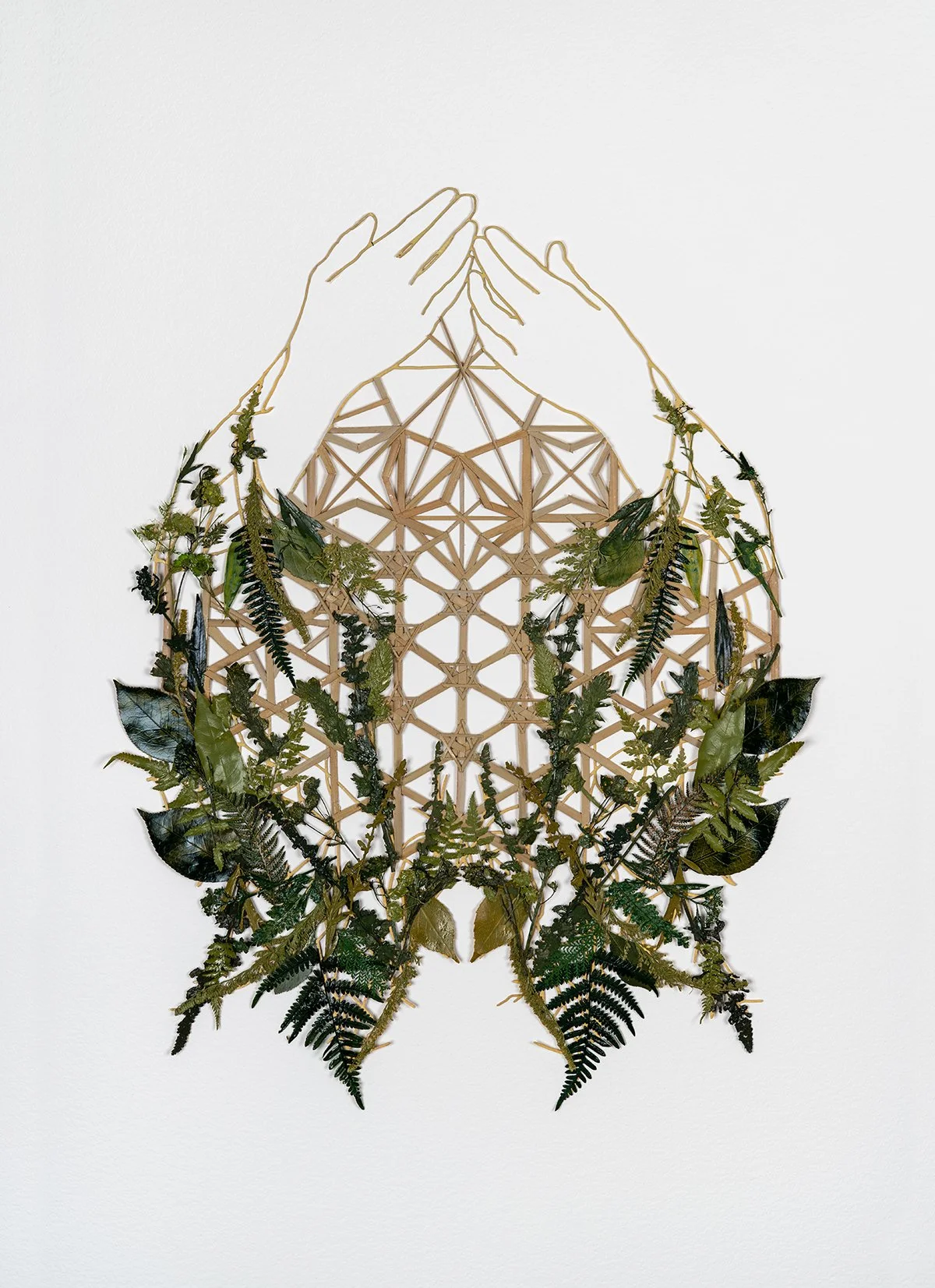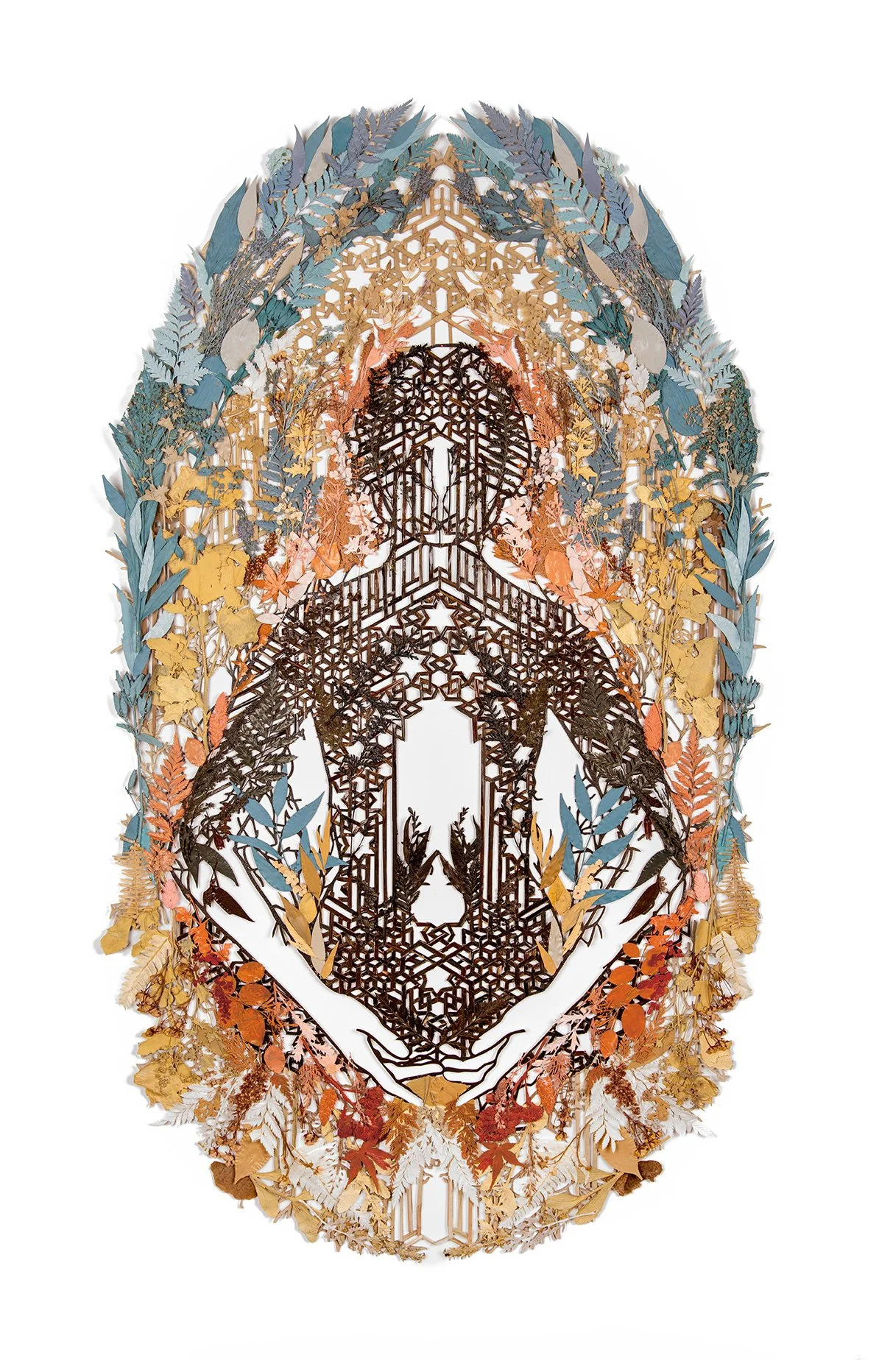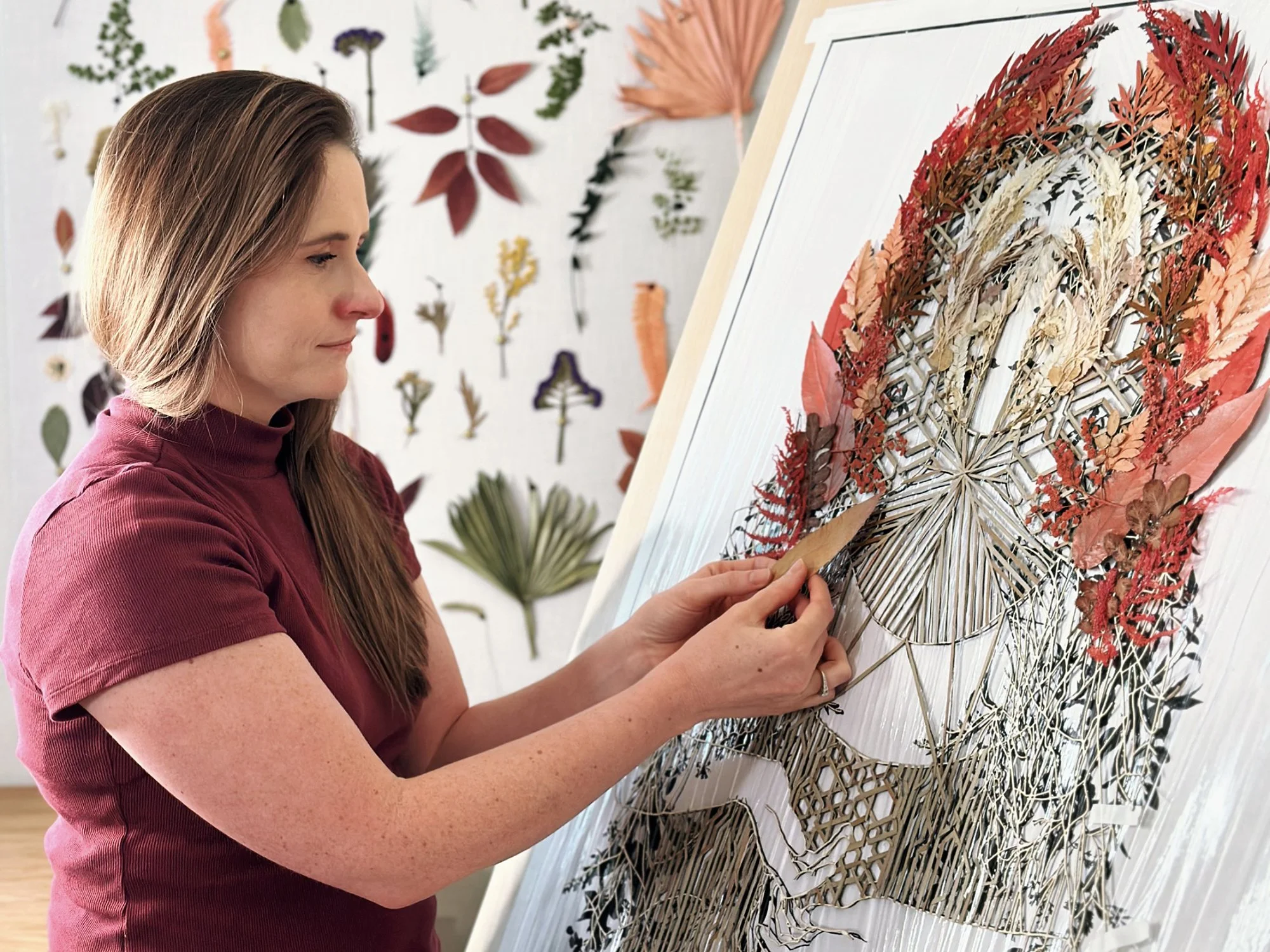Nature, Pattern, and Hope: The Handcrafted Collages of Elise Wehle
"My process reconnects me to my hands and the world around me."
With the ever-growing presence of technology in our daily lives, my hands are often obliviously occupied with slick plastic surfaces and smooth keys. Through my art, I can touch the natural world around me. Meticulously manipulating leaves, flowers, and other flora, I use my hands for hours as I construct figurative collages that remind me of my connection to a larger whole.
Reflecting on the cycles of my own life, I ponder the revolutions of death and growth that Mother Nature undergoes every season. As I touch each plant, I think about what that means for me.
Raised in California, Elise Wehle moved to Utah to study art at Brigham Young University, where she graduated with her Bachelor of Fine Arts. It wasn’t until she visited Granada’s Alhambra, however, that she understood what kind of art she wanted to make. In Spain, the intricacy of the palace’s hand-carved patterns captivated her, and she began incorporating dense, repeating patterns in her own work. Wehle’s artwork has been exhibited across Europe and the United States, including the San Francisco Museum of Craft and Design. Her work has also been featured in The Guardian and The Observer, both in print and online.
Your process involves working directly with plants and natural materials. What draws you to these elements, and how did that become a core part of your art?
French philosopher Pierre Teilhard de Chardin said, “We are not human beings having a spiritual experience. We are spiritual beings having a human experience.” It’s a sentiment many of us have heard before, but something about it sunk deep inside of me and recontextualized the way I see my life—and, by extension, my art.
I’m always trying to reconcile these two undeniable feelings inside of me: that something in my soul is eternal and will continue on, and also… one day I will definitely die. When I design a new composition and pick out materials for my art, I am riveted by those two thoughts. Using pattern as a symbol, I try to capture that sense of spirit and eternity. With tactile leaves and stems, I ground the composition in earthiness and physicality. Combining the geometric with the organic, I depict how I feel inside… this spiritual thing experiencing life through a physical body. That is how my life feels, and hopefully, my art does too.
You’ve mentioned the importance of reconnecting with your hands. How has that physical, hands-on process changed the way you think or feel about your work?
Working with my hands is a form of meditation. While my hands are busy turning strips of palms into stars or ferns into arches, I am allotted time to think, ponder, and quiet a mind that is overwhelmed by the noisy world we live in with its constant newsfeed of anxiety and stress. It is a time to recenter.
When I look at my art, I see that internal communion—that period of thoughtfulness. Being able to do that through the medium of nature is an added bonus. Our screen-addicted generation is often encouraged to go touch grass. Every time I go into the studio, I get to do that in a pretty literal way. Reconnecting with the environment helps me reconnect with myself, and yes—the advice of every life coach and guru actually works… spending time with nature does wonders for our well-being.
How did your visit to the Alhambra in Spain influence your approach to pattern and repetition in your pieces?
If we go back two decades, you'll find me living in Granada, Spain. I haven't traveled as extensively as some of my peers, but even if I saw the whole world, I don't know if I'd love another city as much as I love Granada. Covered in the most fantastic street art, it effortlessly bridges contemporary aesthetics with all of its deep history. But perhaps I cherish Granada so much because it was the first time I really noticed pattern.
We're all surrounded by pattern wherever we go. It's on our clothes, our interiors, and if you're like me, it's in your art. Yet the use of pattern in southern Spain is like nothing else. It covers everything from holy churches to the most ordinary spaces. Even outside the historic center of the city, patterned tiles still blanket shops, cafés, and entryways. It's everywhere.
The pinnacle of all this inspiration I found in Granada was the Alhambra. Situated on a hill overlooking the city, this Islamic palace transformed my art completely. Even though it's not a religious space, it was the first time pattern gave me a holy feeling. The walls... the ceilings... every archway and entrance was covered in the most delicate pattern. The culmination of countless hours of tirelessly working hands offered me something awe-inducing, perhaps even transcendent.
And I don't know if I've ever stopped thinking about it. I knew I could never make something that grand by myself, but it did make me want to make art that honored the human hand. Devoted craftsmanship can help us feel something holy in a world that feels lowly and dark, and I wanted my art to incorporate whatever level of that craftsmanship that I could. I wanted to create a microcosm of what I felt standing in that edifice.
Many of your collages feel deeply reflective and symbolic. How do themes like memory, nature, and personal cycles show up in your work?
During COVID, my anxiety peaked. Pregnant with our third child, I questioned if the world was safe for my new baby and two other children. I feared the unknown, and knowing that some form of suffering would be an unavoidable part of mine and my children’s existence kept me up at night.
Something my therapist said during that time helped: “Good times don’t last, but neither do bad ones.” Making art about seasons—using the reds and browns of autumn and winter, then contrasting them with the greens of spring and summer—has helped me understand that even the deepest pain does not last forever, and new growth and joy will always come again.
My art often symbolizes resurrection—the small but essential resurrections we go through in life as we learn to live with grief and find healing from hurt. Ultimately, my art gives me hope.
What do you hope viewers notice or feel when they see your work in person or online?
I want people to find hope.
Living in the 21st century can be pretty bleak. I constantly feel helpless as I watch those with power use it to the detriment of us all. It’s a terrible, terrible feeling. Yet, I am reminded that this isn’t humankind’s first rodeo. Many eras of bleakness have preceded this one, and people have survived—some carrying profound wisdom to help build the next generation.
After seeing it firsthand many times, I am a believer in new beginnings, both personally and on a global scale. We will always have the opportunity to do a little better.







